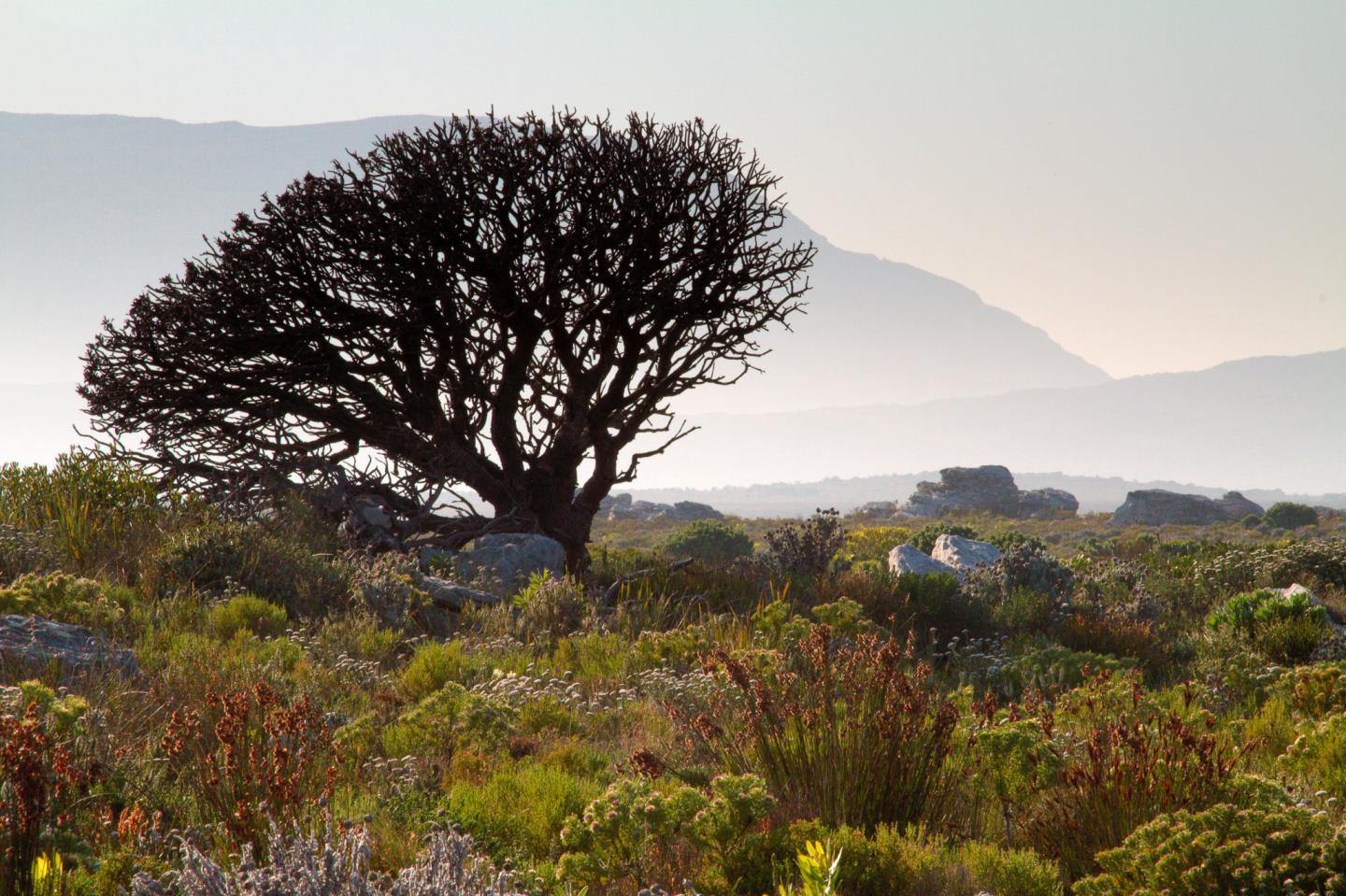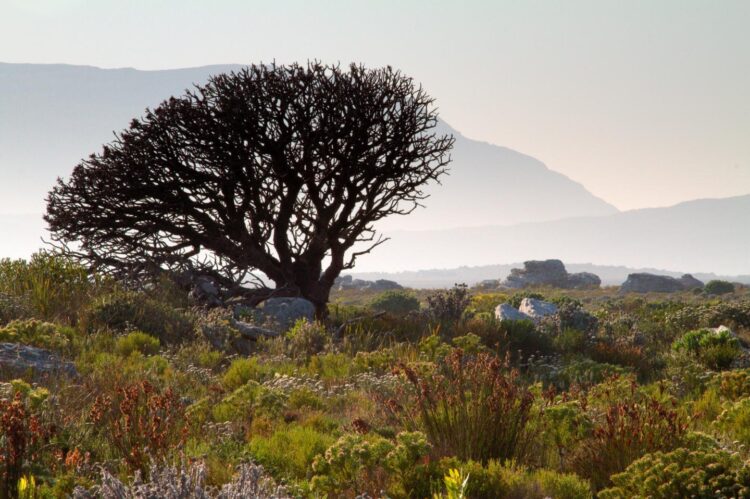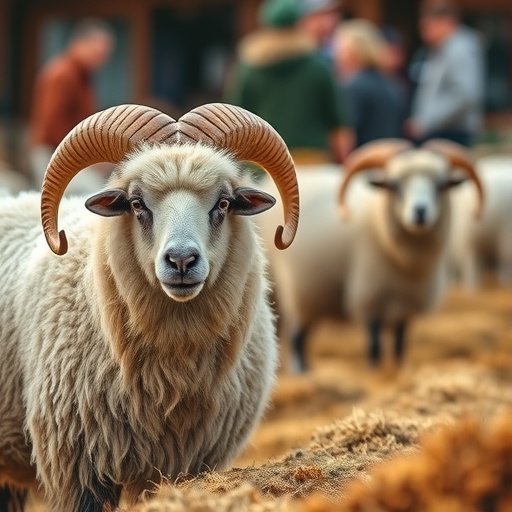The region includes two Global Biodiversity Hotspots; the project will document the distribution and function of species and ecosystems

Credit: Credit: Adam Wilson
BUFFALO, N.Y. — Scientists from the U.S. and South Africa are launching a campaign to map marine, freshwater, and terrestrial species and ecosystems in one of Earth’s biodiversity hotspots: the Greater Cape Floristic Region at the southwestern edge of South Africa.
NASA will fly planes over the area for six weeks in 2023 to measure the height and structure of vegetation and collect ultraviolet, visual, thermal, and other imagery across terrestrial and aquatic ecosystems. Satellites will gather additional data. Teams on the ground will make observations at locations of particular interest, logging plants and, possibly, animals they detect.
Using this data, the team will map the region’s biodiversity, providing estimates of the distribution and abundance of species, and the boundaries of ecosystems, and researching how biodiversity impacts the physical environment and vice versa. In other words, the campaign will help scientists understand the structure, function and composition of ecosystems in the study area.
“This is a broad collaboration between several organizations,” says Adam Wilson, PhD, principal investigator and a biogeographer at the University at Buffalo. “The Greater Cape Floristic Region is a really fascinating place — it has extremely high plant diversity, and there’s been dramatic environmental change over the last 50 years, due to both climate and land use change.
“Our data will capture this region’s biodiversity in greater detail than ever before from a plane or satellite. In combination with the field observations, these new data will help us understand this dynamic region and improve our ability to monitor biodiversity from space globally.”
The project — titled, “Marine, Freshwater, and Terrestrial Biodiversity Survey of the Cape (BioSCape)” — is funded by NASA, with UB researchers receiving $873,000 in NASA funding to complete their share of the work.
The leadership team includes Wilson, associate professor of geography in the UB College of Arts and Sciences; Erin Hestir, PhD, at the University of California, Merced; Jasper Slingsby, PhD, at the University of Cape Town; and Glenn Moncrieff, PhD, at the South African Environmental Observation Network. Other institutional partners include the South African National Biodiversity Institute, South African National Parks, CapeNature Provincial Parks, and the South African National Space Agency.
“Much of the research in Earth observation has been conducted in the world’s forested ecosystems, like the Amazon or northern temperate forests,” says Moncrieff, scientist with the South African Environmental Observation Network. “But non-forest ecosystems harbor a substantial proportion of the world’s biological diversity, and perhaps the most diverse of these non-forest ecosystems are the shrublands of the Greater Cape Floristic Region in South Africa.
“BioSCape will bring the most advanced NASA remote sensing technology to this region, facilitating a large amount of research into remote sensing of biodiversity beyond the forest edge. We hope that by mapping plant biodiversity and its function, we will be able to show the link between important ecosystem services that many people here depend upon and the unique flora of the region.”
Slingsby, lecturer at the University of Cape Town, adds, “The BioSCape campaign really is a great opportunity, not only for boosting the use of remote sensing in the region, but for driving innovation in remote sensing of biodiversity in general. The shrubland ecosystems in the region are hyperdiverse and have complex spatial and temporal natural dynamics due to fire, seasonality, habitat heterogeneity, etc., and will really put the science teams to the test. The aquatic ecosystems will be no less challenging.”
“The world is facing an extinction crisis,” says Hestir, associate professor of civil and environmental engineering at UC Merced. “We are experiencing the sixth great extinction in the history of the Earth, with unprecedented rates of species loss.
Understanding the diversity of life, what drives it and how it might change in the future is critical to maintaining and protecting life on Earth — for us and all creatures.”
The UB Department of Geography is recruiting a postdoctoral researcher to fill the position of BioSCape’s science project manager. The team is committed to building a diverse and inclusive project, Wilson says.
A second project
In a separate but related project in the Cape Floristic Region, Wilson is working with a team that includes some of the same partners to develop a tool that uses satellite remote sensing and AI to monitor ecosystems in the area. The goal is to detect fires, land-clearing, the spread of invasive plant species and other unusual damage to vegetation.
The $483,000 effort — also funded by NASA — is a collaboration among UB, the South African Environmental Observation Network, the University of Cape Town, CapeNature, the Nature Conservancy in South Africa, and South African National Parks.
“The idea is to create a decision-support tool that can support monitoring and management of biodiversity,” Wilson says. “The system will flag unusual ecosystem changes, such as invasive species outcompeting native species, or land cover change in protected areas, so that teams on the ground can then go check it out to learn more about what’s happening.”
This project will also leverage the expertise of Yingjie Hu, PhD, UB assistant professor of geography and a co-investigator on this project. Hu is an expert on geospatial artificial intelligence (GeoAI). One challenge of monitoring biodiversity and ecosystem changes in the Cape Floristic Region is distinguishing between natural changes — such as wildfires that occur regularly and are vital to the health of the local ecosystem — and anomalous changes that threaten biodiversity. Hu’s work will integrate AI and ecological modeling to facilitate development of a system that can make these distinctions.
###
Media Contact
Charlotte Hsu
[email protected]
Original Source
http://www.






